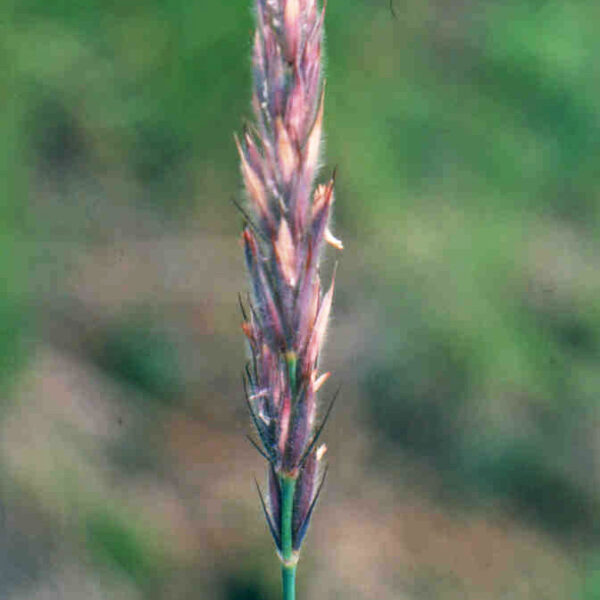Blue Wildrye
Elymus glaucus Buckl. (E. glaucus var. breviaristatus Davy = ssp. glaucus; E. virescens Piper =ssp. virescens)

overview
Perennial, bluish, tufted grass from fibrous roots or short rhizomes; stems 30-180 cm tall, erect or slightly decumbent at the base, the nodes exposed and often covered with dense short hairs. Leaves: Sheaths smooth to rough, white-hairy close to the base, often purplish at the stem base; blades 4-13 mm wide, lax, flat or slightly in-rolled, bluish-green, rough on the nerves, sometimes hairy, ear-shaped lobes present at the leaf-bases, up to 2.5 mm long, often purple; ligules up to 1 mm long, entire or ragged. Flowers: Inflorescence spikelike, 5-21 cm long, 0.5-2 cm wide, erect to slightly nodding, rarely pendent, (one) two to three spikelets per node; spikelets 8-25 mm long, purplish, with bases often overlapping, with two to four (six) fertile florets; glumes 9-14 mm long, unawned or awned, the awns 1-5 mm long; lemmas 9-14 mm long, smooth to short hairy at least on the nerves, the awns 1-25 mm long, straight to slightly curving; anthers 1.5-3.5 mm long (Douglas et al., 2001). Notes: Lemmas awnless or awned, the awns less than 5 mm long = ssp. virescens (Piper) Gould. Lemmas awned, the awns greater than 5 mm = ssp. glaucus. Photo by Dave Polster.
family
Poaceae
ecological setting
Dry slopes, meadows and open forests in the lowland and montane to subalpine zones (Douglas et al., 2001). Prairies, open woods, thickets, and moist or dry hillsides (Rose et. al.. 1998). Frequent in broad-leaved forests on water receiving sites (Klinka et al., 1989).
soil texture
Moder and Mull humus forms (Klinka et al., 1989).
nutrients
Nitrogen-rich soils (Klinka et al., 1989).
soil reaction salinity
Mildly acidic to mildly alkaline.
moisture regime
Moderately dry to moderately moist soils (Klinka et al., 1989).
shade tolerance
Shade-tolerant/intolerant (Klinka et al., 1989).
successional status
Climax on in broad-leafed forests on water-receiving sites (Klinka et al., 1989).
bec zone subzone status
Major component of Oak-Elymus glaucus community.
site rehabilitation
Pioneer species, recommended for erosion control on steep, eroded slopes, roadsides or fire damaged sites (Darris et al., 1996).
wildlife
Fair to good forage for big game and livestock early in the growing season (Darris et al., 1996).
landscaping
Meadow component. Wonderful tall, clump forming species that will spread (S. Bastin, personal communication).
first nations
None known.
seed collection time
August - September
crop intervals
Annual
no seeds per kg
198,410 - 262,345 (Darris et al., 1996)
seed viability
Up to 5 years (Link, 1993)
collection and abstraction
Harvest by hand and clean by gently de-awning with a brush machine or air screen machine (Link, 1993).
seed storage
Store up to 5 years at low humidity and low temperatures (Link, 1993).
fruit seed dormancy treatment
No pre-treatment. Sow directly in fall to depth of 0.6-1 cm at a density of 100-160 seeds per square metre (Rose et al., 1998) and cover with sawdust mulch. Spring sow from March through early May. Seedbed should be moist, fine-textured, very firm, and weed free. Germination is rapid, usually within six to ten days. A nitrogen starter fertilizer recommended and complete fertilizer when seedlings are well established (Darris et al., 1996).
vegetative propagation
Plants can be propagated by division of plants (Greenlee, 1992).
additional info and photos
For more information and pictures, visit the E-Flora BC website at www.eflora.bc.ca.